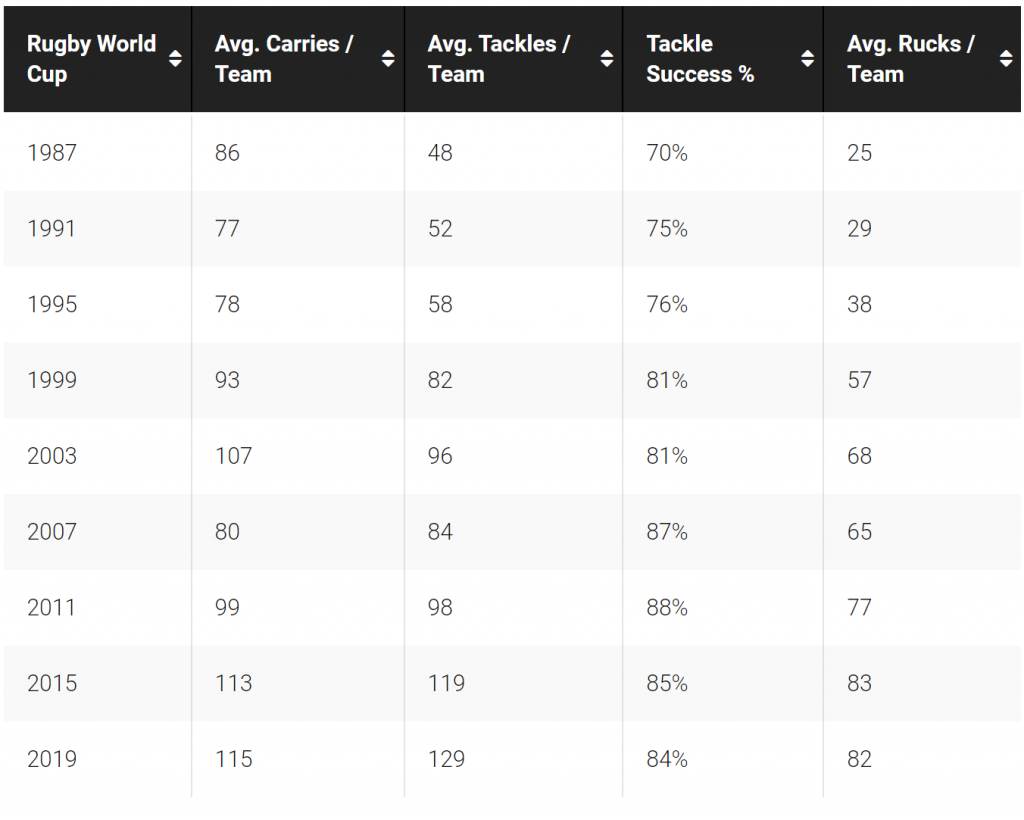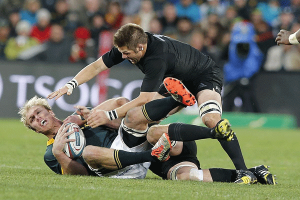Ruck Drills & Coaching Advice
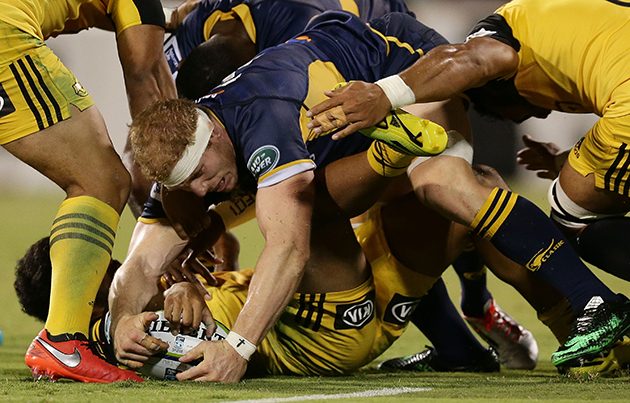
The information on this web page will help rugby coaches and players become more comfortable with rucking, and increase their understanding of the laws of the breakdown and how to complete a ruck correctly.
We also propose several drills and conditioning games that coaches can practice, such as triangle rucks and drills focusing specifically on attack or defence techniques, counter-rucking or players staying on their feet during the breakdown contest.
The principal of the ruck
The purpose of the ruck, also known as the breakdown, is to contest for possession of the ball. It is a physical contest between two opposing sides, with players from both teams attempting to secure possession of the ball.
With the ball, the team on the attack generally wants to speed the game up by ‘clearing’ the ruck within 3-5 seconds to put pressure on the defensive line. On the other hand, the team on defence typically intends to slow the ruck down or gain possession (turnover) of the ball so that it can counterattack.
The team that gains possession of the ball at the ruck can then move it forward.
While rucking may appear straightforward, it isn’t easy to get right. Read the section below for advice on the laws and techniques governing rugby union rucks.
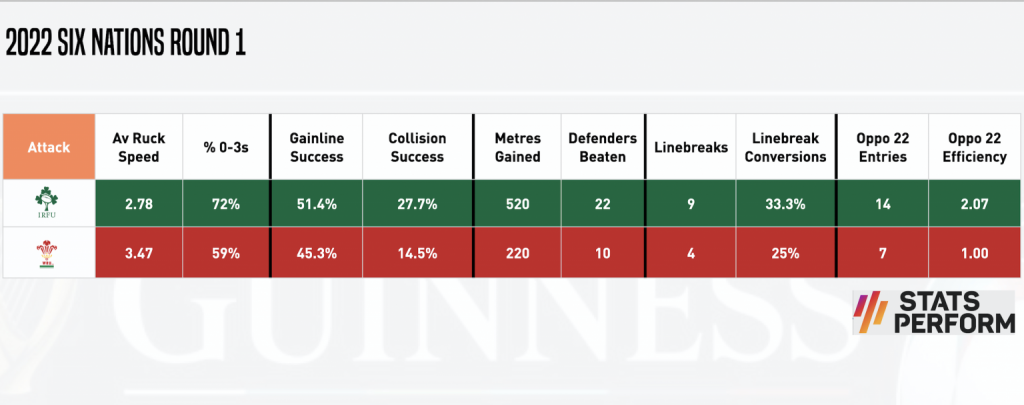
Rugby Union Ruck Laws, 2023
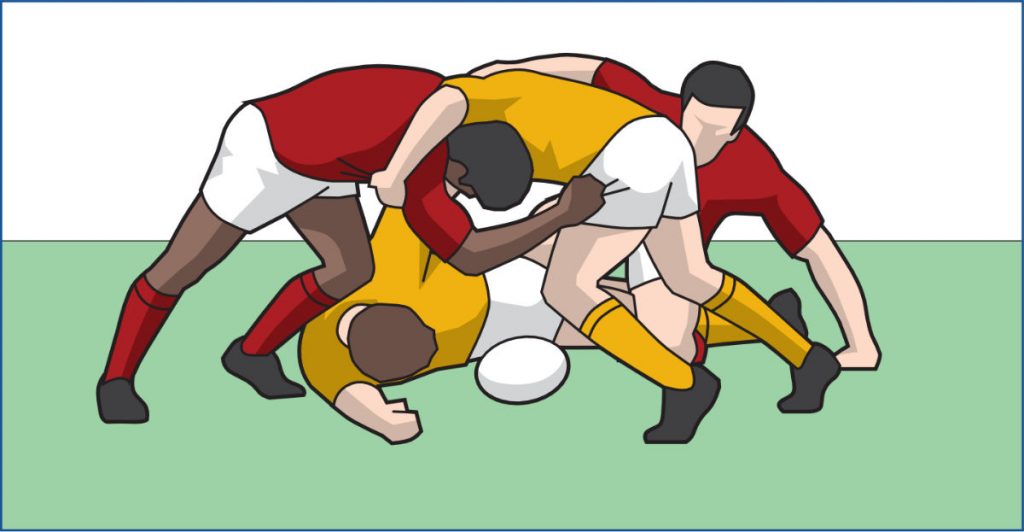
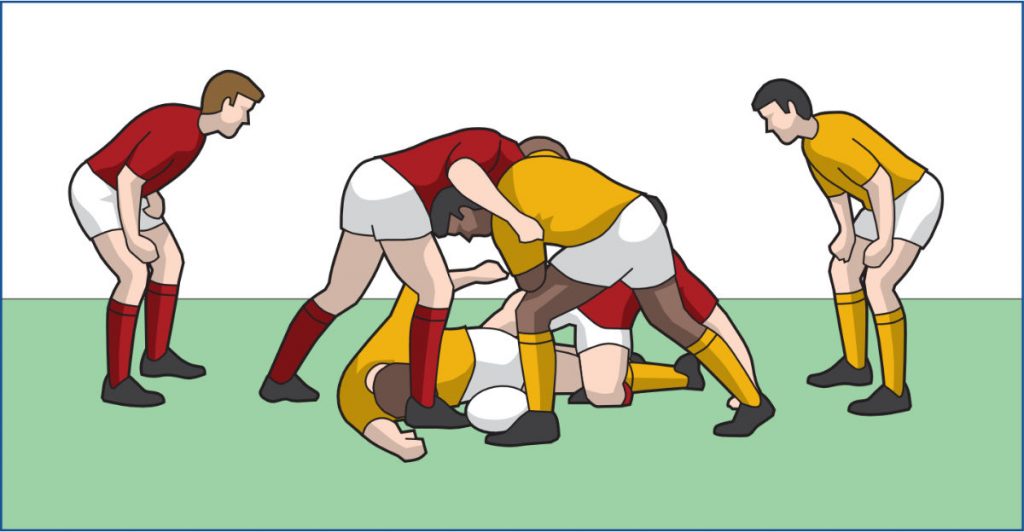
You can read more about the laws governing the ruck here. The rules cover the following critical areas:
– forming a ruck
– offside at a ruck
– joining a ruck
– during a ruck
– ending a ruck
The laws governing the breakdown and the interpretations of those laws by the referees change regularly. Watch the video below, where a group of international referees clearly explain the new rugby laws, including how they will manage the breakdown in 2023.
Win the breakdown, win the game
Rugby Union is changing rapidly, with the ruck becoming arguably the most critical area for winning or losing a game. A 2019 Rugby World Cup study shows that the total number of rucks in a game averaged 82, compared to only 27 in the 1987 RWC. The number of breakdowns in the game will continue to grow.
Another recent study across a broad spectrum of amateur and professional games shows, on average, 116.2 rucks occur per match, highlighting again how important the ruck is in the modern game.
The triangle ruck drill
The Triangle Ruck technique is essential for rugby union players to master. It focuses on teaching players how to form a triangle around the ball to secure possession and protect it.
The drill requires three players, one at each side of the triangle and one behind the ball. The players at the sides of the triangle should focus on pushing and pulling while keeping their feet planted on the ground. Once all players are in position, they can contest for ball possession.
A simple ruck decision making drill
A ruck attack requires a player to identify threats quickly and efficiently, such as determining who is likely to contest for possession of the ball or cause a turnover.
Two teams can set up a drill against each other to practice this skill. The team with possession of the ball will form a ruck and try to keep it secure as long as possible, and then look for an opening for them to move forward with the ball. Meanwhile, the defending team will try to identify any opportunities to turn over that ball.
Ruck decision making on attack
Another area to focus your conditioning games on is decision-making at a ruck when on attack, in possession of the ball.
When a team has possession of the rugby ball at the ruck, then the four significant decisions an arriving player from the attacking team needs to make are as follows:
- defend the ruck to protect the ball
- leave the ruck alone
- attack the ruck to eliminate a threat
- pick up the ball
Generally, there are three options to consider when the ball is made available at the ruck:
- pick and go, when a player with the ball attacks a channel near the ruck
- pass to the first-five/fly-half, who wants to get width on the ball
- a runner off the halfback/scrumhalf, often to a POD
Live conditioning drills with visual aids help players make the right decisions at the ruck.
Ruck defence roles
Ruck defence is another important skill which needs to be mastered by rugby union players. It involves using decision-making, body position and timing to protect the ball from being taken away by an opponent.
Ruck defence is a vital part of your entire defensive system. Some rugby coaches encourage teams to commit up to two players to a defensive ruck, while others prefer more. Ultimately, your team needs to practice drills that enable it to do both to adapt to the opponent’s game plan during a game.
Rugby coaches generally assign three roles to players closest to the ruck when defending the breakdown. The most common roles are:
- Scrumhalf (halfback): this role typically takes a defensive position behind the ruck to protect it from a drive and organise the defenders near it.
- Pillar or guard: two players are positioned on either side of the ruck, with the closest player called the “pillar” or “guard”. This player stands by the back foot and secures any potential attack from the side, such as a pick-and-go. This role also supports the defence near the base of the ruck and helps it set its tempo and structure.
- Post or bodyguard: this role typically stays two arm lengths away from the guard, providing external protection. This role also serves as the decision-maker for the defensive line.
Ruck clean-out drills
A player’s technique when cleaning out at a ruck is critical for:
- protecting from injury
- winning or protecting the ball
- not being penalised
Watch the video below for tips and advice on how to run a ruck clear-out exercise. Please adjust the advice in the video to the latest ruck laws.
Another simple 2-player drill for ruck clean out is having one player act as the attacker and the other as the defender. The attacker must attempt to win possession of the ball by pushing back against the defender.
The following section on the importance of body height at the breakdown is crucial to understand when coaching players to clear out at a ruck.
Body Height at the breakdown
The laws of rugby state that a player’s head and shoulders should remain at or above the level of their hips when involved in the ruck.
Ruck drills focusing on winning the shoulder battle while staying within the game’s laws are most effective. In the shoulder battle, you gain a considerable power advantage by getting underneath your opponent as their chest is exposed.
Ultimately, the lowest man at the ruck tends to win the contest.
The Supporting player at a ruck
Drills focusing on ruck support and the roles of support players at the ruck are vital. Ideally, drills and conditioning games should involve groups of four players:
a ball carrier
the 1st ruck support
the 2nd ruck support
the halfback or a player to clear the ball
The first supporting player at a ruck is most often the most crucial determinant of which team wins the contest for the ball at the ruck. He usually clears away any defenders (the threat) and protects the ball.
The second supporting player should now have options such as helping clean out defenders or securing or playing the ball.
Generally, a supporting player arriving at a ruck should evaluate the ball’s location and determine whether they should “occupy the space” over it or take another option. When ‘clamping’ onto a ruck, the support player needs to keep their shoulders low, chest not exposed, and head up, similar to a scrummaging position, providing stability to the player on the ground. A low position over the ball, with a wider strong stance and head up, is best.
Defensive players must decide whether to challenge the breakdown or remain defensive at every tackle situation during the game. This decision significantly affects the offensive and defensive strategies in a game.
The attacking team ruck support most often influences the decision-making at a ruck. If the first supportive player arrives at the breakdown early and takes control of the ball, it might be best to stay away from it and move into the team’s defensive structure at the breakdown.
If the attacking team’s first player is not in a strong body position over the ball, defenders can counter-ruck and attempt to drive them away from the ball.
Counter ruck drills
This drill focuses on developing players’ understanding of when and how to counter ruck to disrupt opposing teams’ attacks.
It requires two groups of players, with one team attacking and the other defending.
The defenders must attempt to counter the ruck to win the ball back before the attack can score. Live drills like these are ideally done with a referee, so he can help point out areas that may lead to a penalty.
Win the second fight at a ruck
Current rugby rules allow the ball carrier post contact to make the ball available for his team. The quality of the ball is vital to maintaining momentum on attack. We recommend running drills and conditioning scenarios that address two phases:
winning the contest during contact
making the ball on the ground readily available
Defending the breakdown
Ruck defence is a vital part of your entire defensive system. Some rugby coaches encourage teams to commit up to two players to a defensive ruck, while others prefer more. Ultimately, your team needs to practice drills that enable it to do both to adapt to the opponent’s game plan during a game.
Rugby teams generally assign three roles to players closest to the ruck when defending the breakdown. The most common roles are:
Scrumhalf (halfback): this role typically takes a defensive position behind the ruck to protect it from a drive and organise the defenders near it.
Pillar or guard: two players are positioned on either side of the ruck, with the closest player called the “pillar” or “guard”. This player stands by the back foot and secures any potential attack from the side, such as a pick-and-go. This role also supports the defence near the base of the ruck and helps it set its tempo and structure.
Post or bodyguard: this role typically stays two arm lengths away from the guard, providing external protection. This role also serves as the decision-maker for the defensive line.
Other advice for winning the breakdown
To help you develop your rucking skills and abilities, here are some general tips and advice:
Be aware of your positioning on the field – your goal should be to get into position as soon as possible after a tackle or breakdown, to provide support for your team and give yourself the best chance of winning possession of the ball.
Anticipate when opposition players will attempt to contest for possession – it’s important to be alert and ready to get involved in rucking.
Focus on your technique – regularly practice techniques such as triangle rucking, counter-rucking, clean-out drills, and other breakdown drills to improve your ability.
You can use these drills and conditioning games to develop your rugby union rucking ability. Regular practice and dedication can improve your ability to read a game situation, make decisions quickly, and execute effective rucking techniques.

